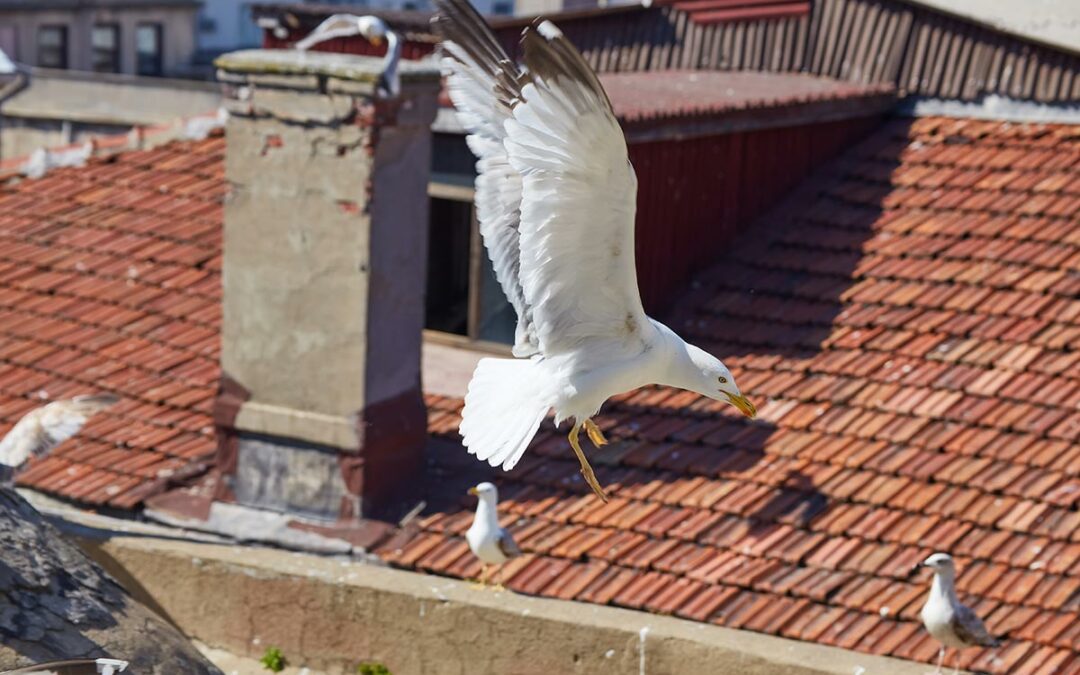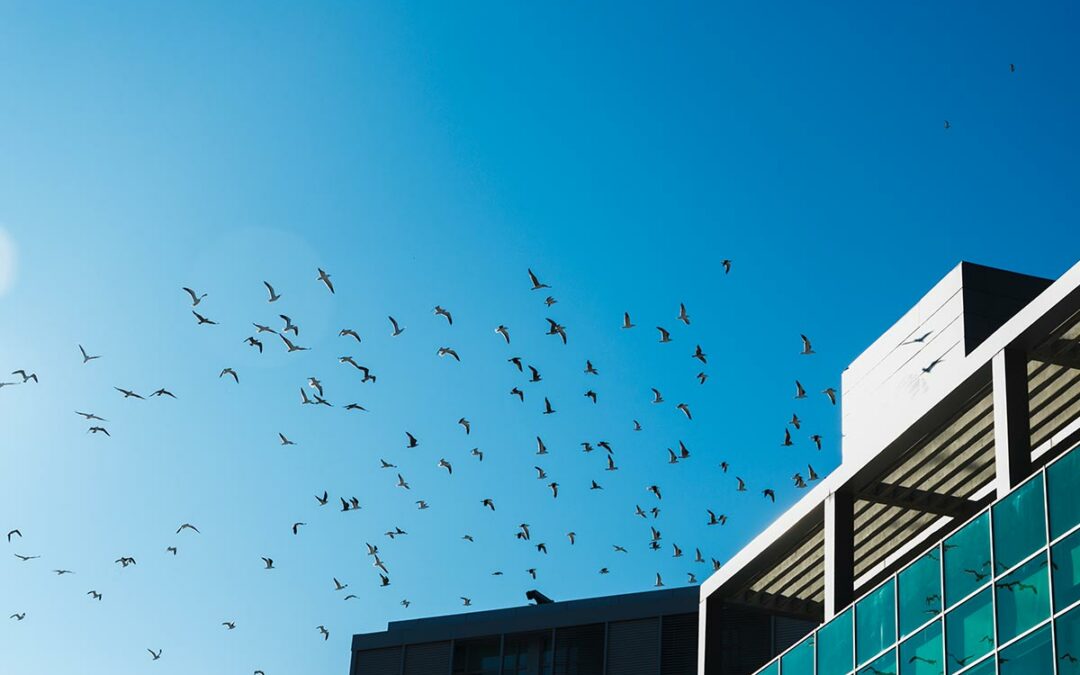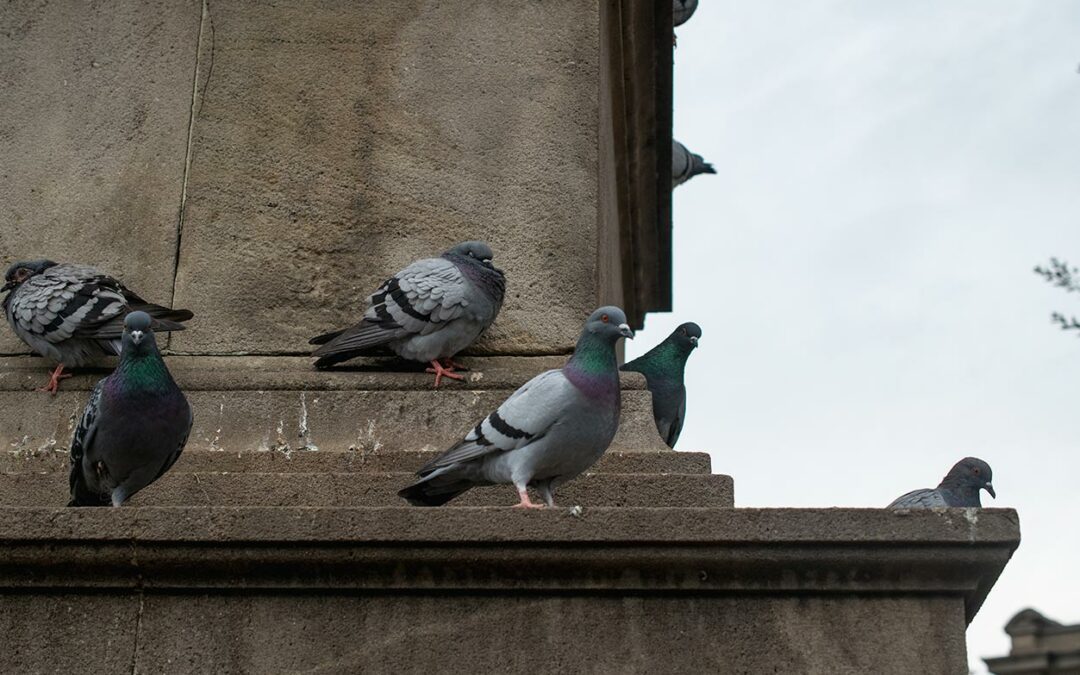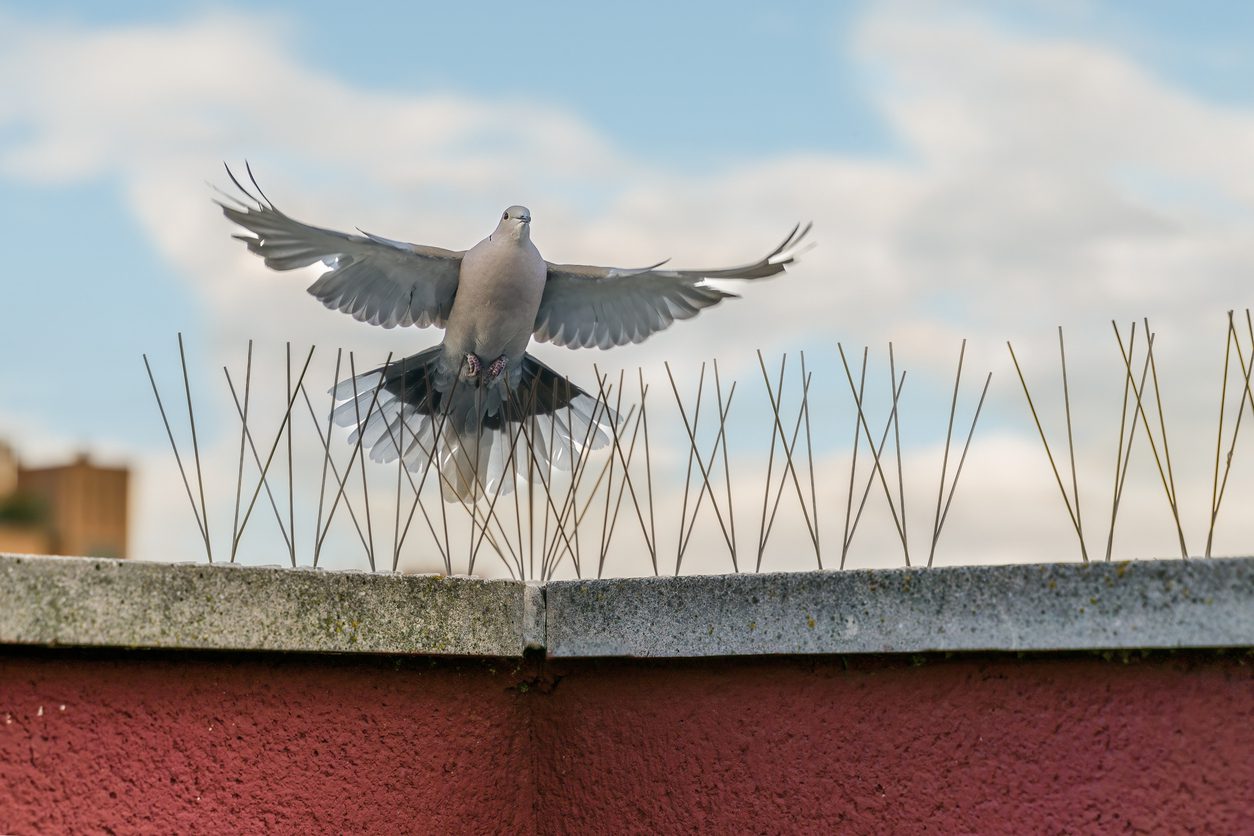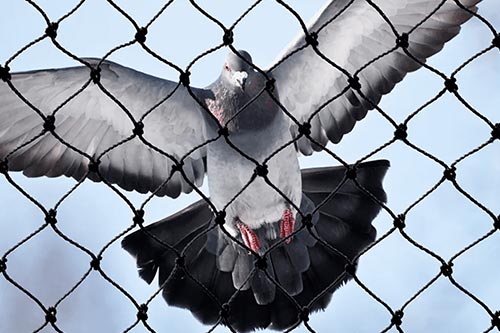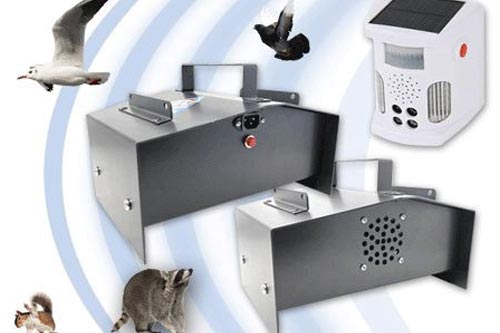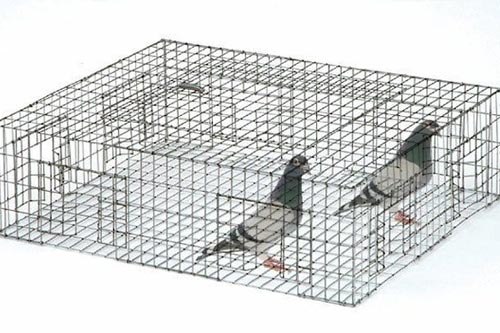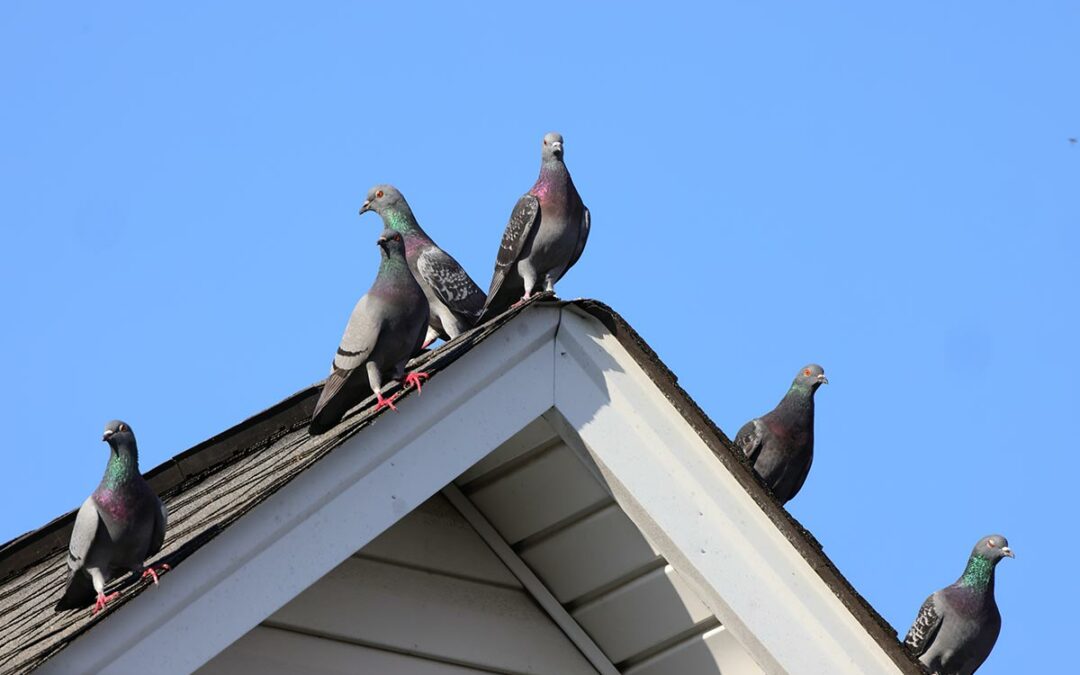
by Pigeon Patrol | Feb 10, 2025 | 4-S Gel Bird repellent, Animal Deterrent Products, Bird Deterrent Products, Bird Netting, Bird Spike, Bird Spikes, pet bird, Pigeon Patrol's Services, Pigeon Spikes, Pigeons, Raccoons, Sparrows, UltraSonic Bird Control
Pigeons may seem harmless at first, but once they take over a property, they can create serious problems. They leave behind acidic droppings, clog drainage systems, spread diseases, and make a lot of noise. If you’re dealing with a pigeon infestation, you’re probably wondering: how do I get rid of pigeons for good?
The good news is that there are humane and effective methods to control pigeons. In this guide, we’ll cover why pigeons are a problem, the best pigeon control solutions, and how to prevent them from returning.
Why Pigeons Are a Problem
1. Pigeon Droppings Cause Property Damage
Pigeon droppings are acidic and can erode stone, concrete, and metal surfaces. Over time, this can cause damage to rooftops, balconies, cars, and historical buildings.
2. Pigeons Spread Diseases
Pigeons carry bacteria, fungi, and parasites that can lead to serious health risks. Some diseases associated with pigeons include:
- Histoplasmosis – A fungal infection that affects the lungs.
- Salmonella – Bacteria that cause food poisoning.
- E. coli – A serious bacterial infection.
3. They Block Drainage and Ventilation Systems
Pigeons often nest in gutters, vents, and chimneys, causing blockages that can lead to water damage and poor air circulation.
4. Pigeon Infestations Hurt Business Image
If pigeons are constantly roosting on your storefront or business sign, it can create a dirty and unprofessional look that turns away customers.
Best Ways to Get Rid of Pigeons
Install Bird Spikes to Prevent Perching
Bird spikes are one of the best pigeon deterrents. They are designed to make it impossible for pigeons to land on ledges, fences, and rooftops.
Use Bird Netting to Keep Pigeons Away from Large Areas
If you need to prevent pigeons from accessing balconies, rooftops, or warehouses, bird netting is a great solution. It creates a physical barrier without harming the birds.
Install Pigeon Repellers (Ultrasonic & Motion Activated)
Ultrasonic pigeon repellers emit high-frequency sounds that humans can’t hear but pigeons find annoying. Motion-activated repellers use light and sound to scare birds away.
Pigeon Trapping for Severe Infestations
For larger infestations, humane pigeon traps may be necessary.
Simple Solutions
- Block Entry Points with Pigeon-Proof Barriers
Pigeons like to nest in vents, chimneys, and eaves. Use wire mesh or netting to block these spaces and prevent pigeons from returning.
- Clean Up Food Sources & Water Availability
Pigeons are drawn to food scraps and water sources. Seal trash bins, clean up outdoor eating areas, and remove standing water to make your property less attractive to pigeons.
Are bird spikes harmful to pigeons?
No, bird spikes do not harm pigeons. They simply prevent them from landing on surfaces.
How long does it take for pigeon deterrents to work?
Most deterrents work immediately after installation. However, pigeons may take a few days to realize the area is no longer suitable for roosting.
Do pigeon repellers work on other birds?
Yes, ultrasonic and motion-activated repellers can deter other pest birds such as crows and seagulls.
Will pigeons eventually stop coming back?
Yes, if you remove food sources, block access points, and use deterrents consistently, pigeons will find another place to roost.
Where can I buy high-quality pigeon deterrents?
You can get bird spikes, netting, and repellers at Pigeon Patrol, a trusted name in pigeon control solutions.
Pigeons can be a major nuisance, but with the right pigeon control solutions, you can protect your home or business. Whether you choose bird spikes, netting, repellers, or a combination of these, taking proactive steps will keep pigeons away for good.
For expert pigeon control products, check out our Pigeon Patrol products and browse our range of humane pigeon deterrents.
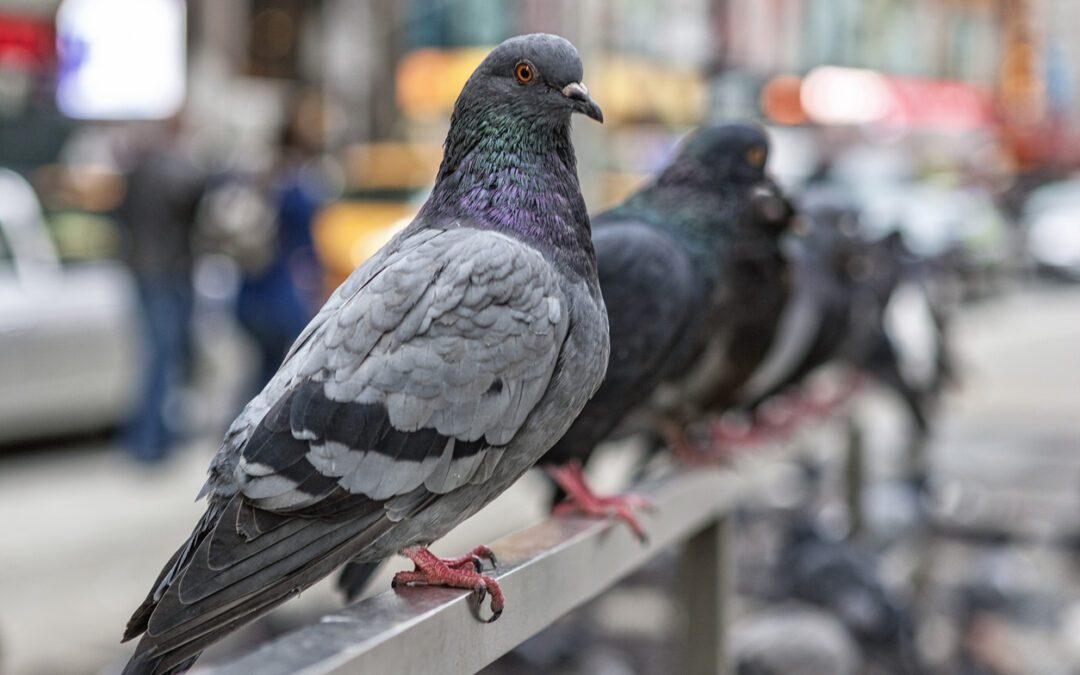
by Pigeon Patrol | Oct 15, 2024 | Animal Deterrent Products, Bird Netting, Bird Spike, Pigeons, Pigeons in the News, UltraSonic Bird Control
VANCOUVER, BC — TransLink and the BC SPCA are teaming up to humanely reduce the pigeon population at VCC-Clark SkyTrain Station. An automatic bird feeder is dispensing birth control for a pilot project to control the pigeon population. OvoControl is a non-toxic, effective and humane contraception used in other cities to prevent pigeon reproduction and reduce populations naturally through attrition.
Pigeons cause problems at several SkyTrain stations despite TransLink’s best efforts to control them. TransLink has:
- Installed netting at stations to stop birds from getting into empty spaces
- Set up spikes and strips to deter pigeons from roosting on flat surfaces
- Hired a falconer to patrol stations with the most pigeons as part of another pilot project
Studies have shown a 50-90% population reduction in OvoControl managed pigeon populations. Pigeons that eat the bait pellets on a regular basis will not be able to fertilize eggs.
Dr. Sara Dubois, Chief Scientific Officer with the BC SPCA explains pigeons can breed rapidly but their urban lifespans are short. With fewer new pigeons born, the pigeon population around SkyTrain stations will reduce naturally and cause fewer operational issues, “OvoControl has been approved for use by Health Canada and only has contraceptive effects in birds. Pigeons must eat their daily dose (5g/bird) for the contraceptive to work, and it is designed to be fed in a manner to maximize pigeon feeding behaviour. We are happy TransLink is ready to partner with us and research what could be a very effective and humane long-term solution.”
Pigeon droppings are messy, but the birds also put customer safety at risk. Pigeons trigger track intrusion alarms, causing our driver-less trains to brake automatically. These hard stops can lead to customer falls and service delays.
TransLink customers and the public can help by not feeding the birds. Outside foods sources encourage birds to roost inside stations and can draw pigeons away from the contraceptive pellets. It is vital for the success of the project that people stop feeding pigeons in this area.
The OvoControl pilot may be expanded to other stations if successful at VCC-Clark.
The innovative partnership between TransLink and the BC SPCA has been supported by other local animal groups:
Linda Bakker, Co-Executive Director, Wildlife Rescue Association –
“The Wildlife Rescue Association of BC supports this new initiative to humanely reduce the pigeon population. Wildlife Rescue strives to reduce human-wildlife conflict in the urban environment and rehabilitates injured and orphaned wildlife. This project aims to humanely reduce the number of pigeons at areas that have a lot of potential casualties and injuries in pigeons. This project will reduce the number of injured, deceased and orphaned pigeons in these areas. Wildlife Rescue supports the BC SPCA in promoting humane wildlife management practices.”
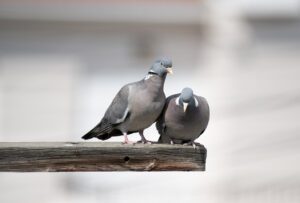
Two pigeons sitting together on piece of wood.
Michael Austin, Executive Director of the Vancouver Humane Society –
“While we continue to grow our wonderful city, it is important to consider the impact such developments have on urban wildlife; Vancouver Humane is pleased to support this initiative by TransLink and the BC SPCA to humanely control the pigeon population in order to reduce unnecessary suffering. We hope that other businesses can learn from this work and that more considerations are made for the non-human animals that live in our communities.”
TransLink is Metro Vancouver’s regional transportation authority and is the first North American transportation authority to be responsible for the planning, financing and managing of all public transit in addition to major regional roads and bridges.
Pigeon Patrol
Pigeon Patrol Products & Services is the leading manufacturer and distributor of bird deterrent (control) products in Canada. Pigeon Patrol products have solved pest bird problems in industrial, commercial, and residential settings since 2000, by using safe and humane bird deterrents with only bird and animal -friendly solutions. At Pigeon Patrol, we manufacture and offer a variety of bird deterrents, ranging from Ultra-flex Bird Spikes with UV protection, Bird Netting, 4-S Bird Gel and the best Ultrasonic and audible sound devices on the market today.
Canada’s top wholesaler for bird deterrent products for twelve consecutive years.
Contact us at 1- 877– 4– NO-BIRD, (604) 585-9279 or visit our website at https://www.pigeonpatrol.ca/
Bird Gone, Pigeon Gone, Pigeon problems, pigeon spikes, 1-877-4NO-BIRD, 4-S Gel, Bird Control, Pigeon Control, bird repellent, Bird Spikes, sonic bird repellent, stainless steel bird spikes, bird spikes Vancouver, Ultra Sonic Bird Control, Bird Netting, Plastic Bird Spikes, Canada bird spike deterrents, Pigeon Pests, B Gone Pigeon, Pigeon Patrol, pest controller, pest control operator, pest control technician, Pigeon Control Products, humane pigeon spikes, pigeon deterrents, pigeon traps, Pigeon repellents, Sound & Laser Deterrents, wildlife control, raccoon, skunk, squirrel deterrent, De-Fence Spikes, Dragons Den, Pigeon, Pigeon Patrol, Pigeons Roosting, Vancouver Pigeon Control, Bird Spikes, Bird Control, Bird Deterrent, Pigeon Deterrent, Surrey Pigeon Control, Pest, Seagull deterrent Vancouver Pigeon Blog, Birds Inside Home De-fence, Pigeon Nesting, Bird Droppings, Pigeon Dropping, woodpecker control, Keep The Birds Away, Birds/rats, seagull, pigeon, woodpecker, dove, sparrow, pidgeon control, pidgeon problem, pidgeon control, flying rats, pigeon Problems, bird netting, bird gel, bird spray, bird nails, bird guard, Pigeon control, Bird deterrents, Pigeon deterrents, Bird control, solutions, Pigeon prevention, Pigeon repellent, Bird proofing, Pest bird management, Pigeon spikes, Bird netting, Humane bird control, Bird exclusion, Urban bird control, Anti-roosting devices, Pigeon removal, Bird barriers
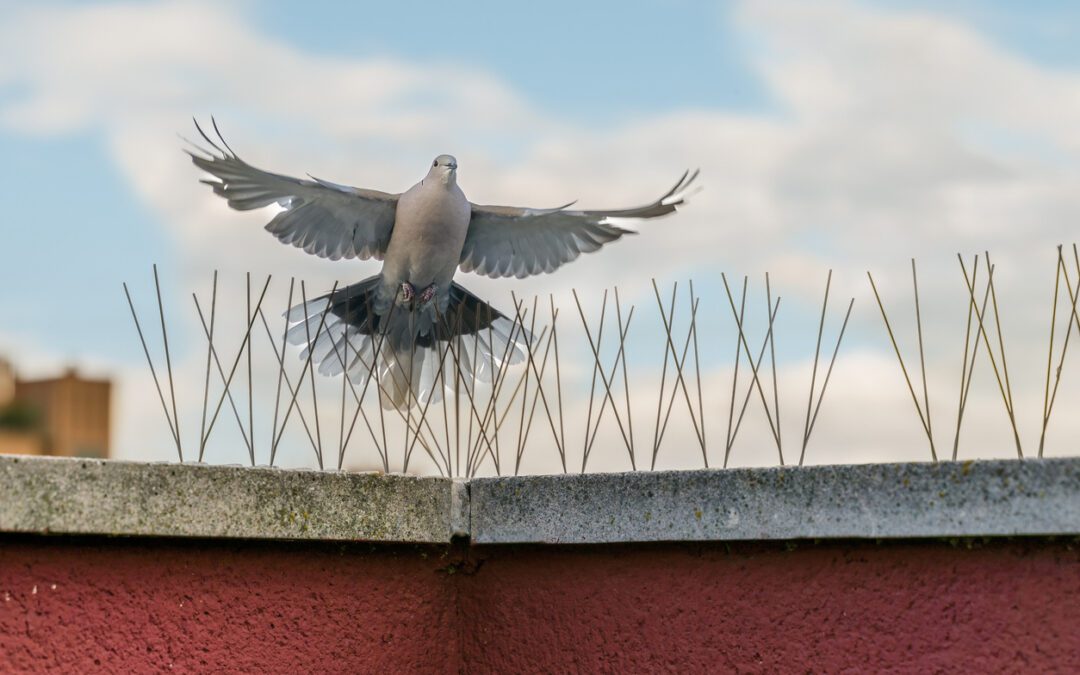
by Pigeon Patrol | Sep 25, 2024 | Bird Netting, Pigeons in the News, Raccoons, Sparrows, UltraSonic Bird Control
Pigeons are our most common urban bird.
They are amazingly resourceful creatures, able to survive in the midst of predatory humanity.
Even so, up to 35% of a local population may perish annually from natural causes and predators.
Pigeons flock together in large numbers to protect themselves against, cats, rats and foxes.
Even when times are tough and the weather is freezing and stormy, they co-operate with each other and readily accept outsiders into their flock.
They have easy temperaments and are adaptable and hardy, which no doubt accounts for their ability to maintain numbers.
The most widespread misconception about urban pigeons is that they are carriers of disease.
The truth is that the vast majority of people are at little or no health risk and probably have a greater chance of being struck by lightning than contracting disease from a pigeon.
Pigeons pair for life.
Both parents take an equal role in caring for their young.
The chicks are helpless when first hatched and are fed for the first few days on ‘pigeon milk’ regurgitated from both parents’ throats.
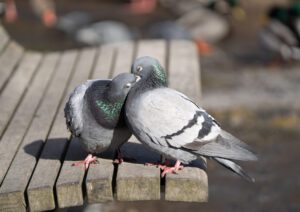
Two pigeons on a park bench in mating season.
The phenomenal navigational abilities of pigeons largely depend on their keen vision and memory for landmarks. Over the centuries these qualities have become legendary.
Pigeon Patrol
Pigeon Patrol Products & Services is the leading manufacturer and distributor of bird deterrent (control) products in Canada. Pigeon Patrol products have solved pest bird problems in industrial, commercial, and residential settings since 2000, by using safe and humane bird deterrents with only bird and animal -friendly solutions. At Pigeon Patrol, we manufacture and offer a variety of bird deterrents, ranging from Ultra-flex Bird Spikes with UV protection, Bird Netting, 4-S Bird Gel and the best Ultrasonic and audible sound devices on the market today.
Canada’s top wholesaler for bird deterrent products for twelve consecutive years.
Contact us at 1- 877– 4– NO-BIRD, (604) 585-9279 or visit our website at https://www.pigeonpatrol.ca/
Bird Gone, Pigeon Gone, Pigeon problems, pigeon spikes, 1-877-4NO-BIRD, 4-S Gel, Bird Control, Pigeon Control, bird repellent, Bird Spikes, sonic bird repellent, stainless steel bird spikes, bird spikes Vancouver, Ultra Sonic Bird Control, Bird Netting, Plastic Bird Spikes, Canada bird spike deterrents, Pigeon Pests, B Gone Pigeon, Pigeon Patrol, pest controller, pest control operator, pest control technician, Pigeon Control Products, humane pigeon spikes, pigeon deterrents, pigeon traps, Pigeon repellents, Sound & Laser Deterrents, wildlife control, raccoon, skunk, squirrel deterrent, De-Fence Spikes, Dragons Den, Pigeon, Pigeon Patrol, Pigeons Roosting, Vancouver Pigeon Control, Bird Spikes, Bird Control, Bird Deterrent, Pigeon Deterrent, Surrey Pigeon Control, Pest, Seagull deterrent Vancouver Pigeon Blog, Birds Inside Home De-fence, Pigeon Nesting, Bird Droppings, Pigeon Dropping, woodpecker control, Keep The Birds Away, Birds/rats, seagull, pigeon, woodpecker, dove, sparrow, pidgeon control, pidgeon problem, pidgeon control, flying rats, pigeon Problems, bird netting, bird gel, bird spray, bird nails, bird guard, Pigeon control, Bird deterrents, Pigeon deterrents, Bird control, solutions, Pigeon prevention, Pigeon repellent, Bird proofing, Pest bird management, Pigeon spikes, Bird netting, Humane bird control, Bird exclusion, Urban bird control, Anti-roosting devices, Pigeon removal, Bird barriers
